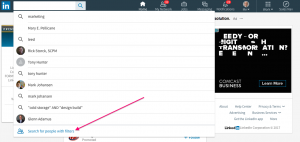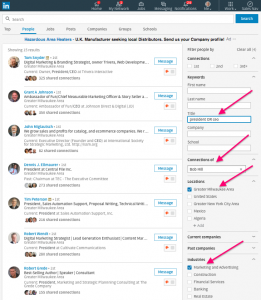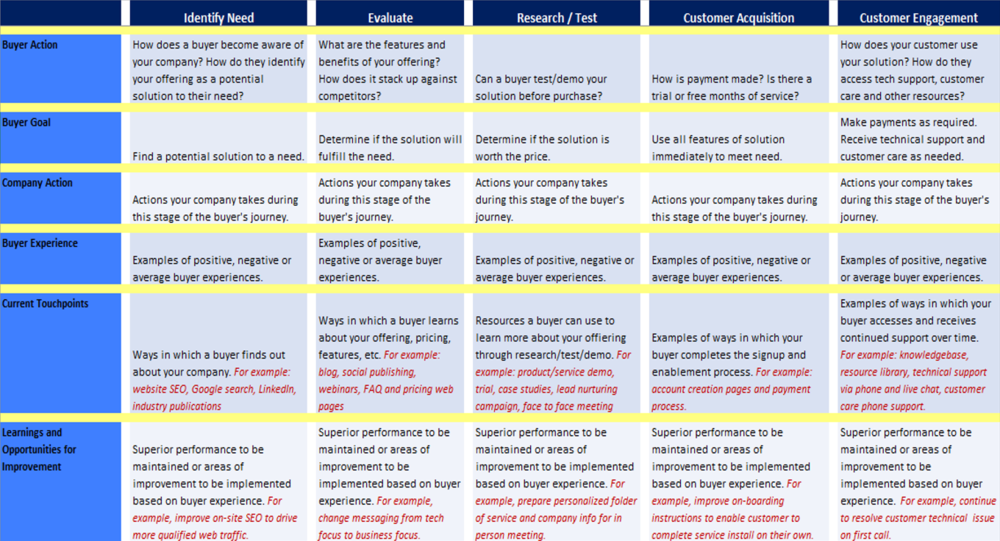Sales coaching sessions can help your reps secure bigger deals and tackle common obstacles to buying. Coaching can lead to a 28% higher win rate and an 88% increase in productivity.
In this guide, I’ll walk you through everything you need to know about sales coaching. We’ll also go over the model, techniques, tools – and so much more.

Table of Contents
Effective sales coaching is iterative, individualized, and inclusive. A sales coach empowers employees to feel they can grow, contribute to team success, and take accountability for their performance.
Becoming an effective sales coach comes from experience, so I spoke to experienced sales coaches who share their key coaching techniques. For those who want to improve sales coaching, there are also sales coaching programs that can help you learn how to build successful teams that consistently exceed quotas.
What doesn’t fall under the sales coaching umbrella?
- Telling salespeople exactly what to do (rather than giving them the end goal and letting them figure out the specifics).
- Giving the same advice to every single person.
- Ignoring individual motivators, strengths, and weaknesses.
Examples of Sales Coaching
To get a better sense of what sales coaching looks like, here are a few examples:
- Reviewing a call with a sales rep and discussing what went well and where they could improve
- Offering inside sales training and tips
- Reviewing remote selling techniques and tools
- Scheduling weekly check-ins with reps to discuss objectives and areas of the sales process they’re less confident in
- Shadowing a rep’s meeting or phone call with a prospect
- Reviewing a rep’s email conversations with prospects throughout different points in the buyer’s journey
Benefits of Sales Coaching
Sales coaching goes beyond its positive impact on your bottom line. See common benefits that follow sales coaching programs.

1. Sales coaching improves employee retention rates.
Rep turnover is a notorious problem in sales, and lack of development is a top reason why sales personnel leave companies.
Ignoring coaching can exacerbate the problem. Fifty-eight percent of workers are likely to leave their company if they don't receive professional development opportunities, according to 2022 research from the Conference Board.
While burnout or a bigger salary elsewhere will always be a temptation, professional development opportunities will motivate many others to stay.
Faster Capital suggests that coaching enhances performance and increases motivation. These two benefits alone are likely to improve staff retention.

Image Source
2. Sales coaching allows you to share best practices.
When you notice one rep is using a strategy to great success, you can immediately teach the rest of your team to do the same thing.
For example, one HubSpot sales rep found success via video prospecting — a best practice that spread throughout his team.
Think of sales coaching as a rising tide that lifts all boats.
3. Sales coaching maximizes your investment in sales training.
Companies spend billions per year on sales training. However, 2019 research from Gartner found that B2B sales reps forget 70% of the information within a week of training. Up to 87% of information will be forgotten within a month.
Effective sales training relies on consistent, long-term reinforcement, which the sales manager can achieve through sales coaching.
George Donovan, Chief Revenue Officer at Drawbridge, cites the Five Principles of Modern Learning as a tip for continuous learning. In particular, Donovan mentions “Bite-sized. Snackable chunks.”
Bite-sized learning may help with retention. Bite-size learning is effective because it reduces the cognitive load and increases learning. People learn more effectively when they can take a break.
4. Sales coaching increases empathy.
Human connection is crucial in sales. In fact, 89% of sales leaders rate human relationships as the most important part of selling.
According to Maya Sasson, coaching can increase empathy and other soft skills that improve the sales process. Sasson says, “A well-trained sales team is better prepared to excel in fostering strong bonds through effective communication, active listening, and empathy.”
Empathy has many benefits for sales. It helps build human connection, but it also helps sellers decipher the best route for their prospects. According to Jonathon Ilett, Head of Sales at Cognism, not every prospect wants rapport building, and it’s up to the sales rep to use their soft skills to know when a rapport is right and when it’s not.
5. Sales coaching allows reps to practice in a safe environment.
During the sales coaching process, sales reps might have time to practice critical tasks and real-life circumstances, like cold calls, demos, rejection, and more.
This training can take the form of roleplay, which allows reps to practice in a safe environment where they can be comfortable and get used to everything involved in the sales process.
The hands-on experience is effective because it can help sales reps get used to the job and, at times, override the intuitive emotions associated with rejection.
Anthony Nicks, Founder and CEO of Transformative Sales Systems LLC, advises that sales reps must develop a resilience routine that helps them accept rejection. The best way to find a solution that works is to practice. Nicks warns, “It’s not about avoiding rejection but learning how to recover.”
Sales Coaching Models
A quick search will reveal hundreds of sales coaching models, emphasizing that there is no “one-size-fits-all” approach. What works for one team might not work for another.
If your sales rep team uses specific methodologies in their work, you might consider a sales coaching model that adapts to those methods. If your sales team employs several different sales processes, you might look for a more flexible sales coaching program.
If you aren’t sure if a coaching model is a good fit, ask your team. To get their feedback, consider using an employee feedback tool or conducting an internal survey.
Now that you have a better understanding of what sales coaching is and why it’s important, let’s look at some sales coaching techniques you can implement.
Sales Coaching Techniques
These commonly-used coaching techniques are applicable to all types of sales teams. Don't be afraid to incorporate some (or all) of them on your team.
1. Use sales data.
It can be overwhelming to figure out where to focus your sales coaching. That’s where data comes into play. Rather than using your gut to guide you, do what high-performing salespeople do: use your HubSpot CRM or sales software to identify where your team can improve.
In HubSpot’s State of Sales report, it was found that 19% of top-performing salespeople are more likely to analyze their data to optimize the sales process and 17% more likely to describe their CRM as very important to the sales process

Image Source
To effectively use data, keep track of monthly conversion metrics. This will help you identify the performance of individual sales reps, the team’s average performance, and areas of improvement.
For example, you notice deal velocity is increasing, but close rates are decreasing. If that’s the case, you should examine your reps’ email-to-meeting, meeting-to-demo, and demo-to-close rates to understand where they’re moving too fast.
Use the data to guide how you want to effectively implement sales coaching.
Shane McEvoy, Managing Director at Flycast Media, provides an example where analyzing sales data is effective, “Many deals get stuck when customers have objections; we can teach our sales reps better ways to handle these objections. By looking at data, we can focus our coaching on specific problems and help our team improve faster.”
2. Use conversation data.
Conversation data allows for nuanced, targeted training for specific circumstances or reps. SuperBee’s leadership team has committed to listening to at least one call recording each week.
Antoinette Jackson, creative director and founder, says, “[Listening to a weekly sales recording] has become a weekly tradition that ensures we deliver specific call coaching as opposed to just spot coaching on particular opportunities. For example, in the first week of the month, we focus on a discovery call, the second week is a demo call, the third week is a pricing/negotiation call, and the fourth week is a wildcard.”
“This approach is vital because, from our experience, 46% of reps didn’t originally plan to go into sales. We often have to train them from scratch, recognizing that they might not have a natural inclination toward sales or conventional sales career aspirations. That’s why we make it a point to talk to our reps and tailor our coaching to their individual goals and skill sets.”
You can track conversation data using HubSpot’s Conversion Intelligence. Conversion Intelligence brings your customers’ voices into your CRM. The AI can transcribe the voices and conversations and analyze the calls. With this data, you can identify coaching opportunities, spot areas for improvement, or even find quantitative data about what works for your prospects.
3. Mix up your sales coaching styles.
Selling requires a variety of skills and techniques, so make sure your coaching incorporates multiple styles.
Director of Sales Enablement at Brainshark, Mike Kunkle, recommends varying between:
- Strategic coaching or big-picture guidance. That includes topics like selling to a specific market, navigating a complex buying process, working with customer champions, etc.
- Tactical coaching or nitty-gritty suggestions on starting a relationship, qualifying, etc.
- Specific skill coaching or helping salespeople improve their communication, questioning strategies, rapport-building abilities, remote selling, etc.
4. Get buy-in.
Most salespeople are fairly independent — that’s why they’ve chosen to work in sales — and don’t respond well to being ordered around.
You’ll have far more success if you involve them in the improvement process. That means asking them how they think they performed, what they can do to get better, and which metrics can help them measure their progress.
5. Leverage your best sales reps.
Salespeople can learn just as much from each other as you. Use that to your advantage. If one person on the team is crushing it, ask them to share their learnings with everyone else.
During your next team meeting, ask these reps to present their winning strategy. Your other salespeople will be motivated to imitate them, and the group will potentially find an even more effective way to execute this play.
Sales Coaching Best Practices
In addition to implementing common coaching techniques, leveraging best practices can maximize the impact of your sales coaching.

Image Source
Consider the following when creating your sales coaching program:
- In addition to data-driven areas of improvement, ask your sales reps which skills they would like to develop. This provides your team with a sense of ownership over their professional development.
- Incorporate call recording or sales performance management software. These tools allow you to highlight specific missteps and reinforce high-performing sales techniques.
- Pair coaching discussions with training materials. Would your employee benefit from watching a certain webinar? Are there videos or training guides they should refer to? Follow-up sessions with tangible resources for your reps.
- Include remote employees in coaching sessions. According to Revenue.io, 45.2% of sales development reps and account executives report receiving less coaching while working remotely. Make sure you meet with your remote workforce as frequently as your in-office team.
- Spend over an hour each week on sales coaching. Of companies with effective sales coaching programs, 61.4% spend more than an hour per rep each week on coaching.
- Track representatives’ performance data after coaching. This will help you quantify outcomes from sales coaching.
Sales Coaching Desired Outcomes
Specific sales coaching outcomes vary based on your company’s coaching goals. However, these are common desired outcomes of sales coaching:
- Sales reps are accountable, take ownership of their daily activities, and know when to ask for help.
- Targets are consistently met and exceeded. The business is on track to meet revenue goals.
- Pipelines are filled with qualified, relevant leads.
- Deals have a higher win rate.
- The sales cycle length is not too exhaustive.
- Retention rates for sales reps are high.
Sales Coaching Plan
If you’re looking to implement or formalize sales coaching on your team, start by building a sales coaching plan. This document should include the following three elements.
-
Onboarding Plan: This includes everything reps should know about joining your sales org. Explain the training schedule, introduce key internal players, and train your reps on the resources that will help them succeed.
-
High-level Goals: Outline what is expected of sales reps in their current position. This can be broken into goals to be met monthly, quarterly, or after a determined period of days.
-
Check-in Schedule: Let reps know when you will meet with them to assess their progress toward meeting those goals.
Below, we'll provide a sales coaching plan template that can be customized to meet your business needs.
Sales Coaching Plan Template
The following free template will help you create personalized sales coaching plans for your reps. To get the most success from a sales coaching plan, encourage your sales reps to follow the plan from day one and throughout their time with your team.

The image below highlights a section of the goal template where objectives are broken down month to month.

Sales Coaching Tools
There are many tools you can use to improve or simplify your sales coaching techniques. These tools include software and educational resources you can use both individually or with your team.
1. HubSpot Sales Coaching for Managers

Image Source
HubSpot Sales Coaching for Managers is a free program for coaching and supporting your reps. The lessons focus on coaching reps to hit their goals and helping your team positively impact the business’ bottom line.
2. LearnUpon
LearnUpon is an LMS that enables your team to build a sales training academy that onboards and continuously develops your salespeople. Combining powerful management and delivery features with engaging learning experiences, you can equip your sales team with training that sharpens their skills and helps them close more deals.
3. TalentLMS
TalentLMS is an LMS for growing businesses, allowing you to effortlessly train your sales teams. With an easy-to-use interface and an interactive AI content creator, it empowers you with all the tools you need to deliver sales training that sticks. Its library of ready-made courses, TalentLibrary, features bite-sized sales courses authored by experts, tailored to meet your salespeople’s every need.
4. Chorus.ai
Chorus.ai provides a simple way for you to use sales enablement practices to coach reps. The software's AI capabilities simplify the creation of your coaching plans while pulling from real rep conversations, data, and interactions with leads. You can also use this tool to measure the success of your sales coaching tactics.
5. Gong
Gong provides a unique look into rep interactions with your customers by using the product’s conversation intelligence capabilities. As a sales manager, this feature will make it easy to identify and replicate the actions of your best. Gong also gathers the conversations your reps have with prospects on the phone, email, or web conference, making reviewing performance simple.
6. Showpad Coach
Showpad Coach, formerly known as LearnCore, allows you to review analytics related to each of your reps. With this feature, you can identify which people need what type of support and coaching. You can also create and share coaching videos with your reps.
7. ExecVision
ExecVision is a conversation intelligence program ideal for coaching large teams of reps. The software allows you to easily identify coachable moments in every rep‘s process. It transcribes sales calls and highlights key moments in every rep’s workflow. Then, you can coach the reps in the areas where they need support.
In addition to sales coaching techniques and tools, here are some tips to keep in mind. These sales coaching tips will help you effectively develop reps to ensure your team’s productivity.
1. Focus on the middle 60%
According to Brent Adamson and Matt Dixon, authors of The Challenger Sale, most sales managers tend to spend most of their energy coaching the “very best and very worst” salespeople on their team.

Managers feel compelled to help the bottom 20% to get their team to quota. They want to help the top 20% because it’s rewarding.
Consequently, the middle 60% gets the least amount of attention. But Adamson and Dixon explain, “The real payoff from good coaching lies among … your core performers.”
After all, the worst-performing salespeople (who are consistently underperforming, that is) usually aren’t right for the role. You should replace them, not try to train them up.
And the stars on the team show little to no performance improvement from coaching. So, when thinking about which reps to focus your attention on, think of the middle of the pack.
2. Share your vision
Sales reps want to feel they’re contributing to the company’s success.
Come up with a mission for your team that goes beyond “sell X amount of business.” This goal should be specific, actionable, and exciting. Think “break into A market,” “become known internally for doing B,” or “break the company record for C.”
Periodically, throughout team meetings and one-on-ones, share the overall team's progress toward this objective. Point out the people who have made significant contributions.
The side effects of a shared vision are paramount. Sales teams with a shared vision can expect to enhance their understanding of customers, streamline communications, and increase efficiency.
3. Learn each salesperson’s drivers
Everyone is motivated by different things. Even if the majority of your reps are motivated by making money, their specific goals probably vary widely. Understanding your sales reps' motivations will help you tailor your coaching style to each sales rep.
To identify how you can engage your reps, former HubSpot Executive Dan Tyre recommends asking what they want to accomplish in their personal and professional lives.
“This will not only show you the type of person they are but also give you insight into what things will motivate them the most,” he explains. Tyre asks these questions:
- Are you motivated right now?
- What motivates you long-term?
- What can you do to motivate yourself?
- How will I know if you are not motivated?
- What do you want me to do if you don’t appear motivated?
Having these insights will help you better engage with your reps and their personal visions.
4. Use incentives effectively.
Sales contests and incentives should change behaviors, not reinforce existing ones. That’s why offering $100 to the first rep to make a sale that day isn’t very helpful.
Instead, figure out what your salespeople aren’t doing that you’d like to implement. Design your contest around that action.
To illustrate, maybe your reps are focusing too heavily on product A because it requires less technical knowledge than product B. You might give a bonus to every salesperson who sells more than X units of product B.
Incentives can create competition within sales teams. Matt Lopez, CEO and Founder of Revenue Nomad, describes salespeople as having an insatiable drive to succeed and a competitive spirit.
The good news is that competition isn’t always a bad thing. Nick Beltramo suggests that with the right tactics, sales leaders can create healthy competition within the team. Beltramo recommends establishing KPIs, coaching with data, and challenging sales reps as effective ways to foster friendly competition.
5. Give personal rewards
Instead of assuming what your team might appreciate, ask. You may want to provide options.
Individual prizes should be tied to a specific rep’s goals. For example, if a rep is working on increasing their call-to-meetings rate, you might say you’ll take them to a nice lunch once they improve by X%.
Not sure what to offer as a prize? Here’s where knowing every salesperson’s motivators is handy. You can also directly ask them, “What can I give you as a prize for achieving [objective]?”
Rewards are hugely motivating for teams. Sam Harris, chief marketing officer at Rippl, an employee rewards platform, knows the benefits of financial rewards.
Harris says, “Financial rewards are great for sales teams, but it’s important to balance these simple rewards with personalized efforts.”
Sales teams using Rippl earn points that can be exchanged for vouchers for popular brands chosen by the individuals themselves. “When this personalized approach was adopted at Rippl for an automotive client targeted to sell car accessories, they found an average 42% uplift in sales when personally incentivized with rewards,” Harris says.
6. Prepare and practice with multiple coaching scenarios.
Your team is bound to evolve — either because of increased skills or rep turnover. Keep your coaching effective by preparing for different scenarios. With your preparation and training plans already complete, you’ll be able to teach reps with different needs at any time.
If you notice there are several members of your team who need the same type of coaching in a specific problem area, you can prepare information and training around the topic to share with your group.
This sales coaching tip can be implemented using roleplay. On roleplay, David Rubie-Todd, co-founder and marketing head at Sticker It, says, “[Roleplay] allows [the sales team] to practice their pitch, objection handling, and negotiation skills in a safe and controlled environment. It also provides an opportunity for constructive feedback from their mentor and other team members.”
7. Leverage your entire sales team.
Some sales reps learn best by example. Ask your top performers to lend a hand and allow members of your sales team to listen in on a few successful sales calls (or sales call recordings). Later, debrief and discuss why the sales calls were successful, what could be improved, and how each rep would have handled the call themselves.
Shane McEvoy, managing director at Flycast Media, recommends shadowing so junior sales teams can watch senior team members and learn. McEvoy says, “[Through shadowing], new reps see how the pros handle real sales situations. Afterward, we give feedback to help them improve their skills. This way, new reps learn by doing and seeing, which allows them to get better at their job quickly. It also helps build a supportive team where everyone learns from each other.”
Shadowing is a powerful coaching method. Nidhi Kala credits this training method with helping teams learn pre-sales rituals, understand processes, and develop soft skills such as tone of voice awareness.
8. Have the hard conversations.
Many sales reps struggle to meet their potential because of the inevitable prospect push-back ... and the dreaded word “no.” But most reps work their way through this discomfort with practice.
With the sales reps you’re coaching, role-play some uncomfortable scenarios and hard conversations. During this training exercise, practice some common objections. Once reps get more comfortable hearing those objections and responding, they’ll be better equipped to face them on real sales calls.
9. Provide more positive than negative feedback.
For each piece of constructive criticism, give more positive reinforcement. Not only does this help maintain morale, but it also allows sales reps to recognize what they're doing right — and hopefully encourages them to repeat and build on that behavior.
Positive reinforcement is likely to aid the relationship between the sales coach and the sales coachee.
When it comes to giving criticism, it turns out that there is a golden ratio, and that’s five (almost six) positive comments for every criticism.
A study by Emily Heaphy and Marcial Losada found that the highest-performing teams received 5.6 positive comments for every negative one.

Image Source
Positive comments are more natural than you might think, and negative comments may be more common than you’d like. An example of a positive comment would simply be, “I agree with you,” or, “Great idea!”
Negative comments can include a simple “I don’t agree.”
It goes without saying that negative comments can reach derogatory levels, but the point is it may be easy to make harmful comments without realizing. On the flip side, a sprinkling of positivity can make criticism easier to take and positively impact team performance.
10. Ask questions.
Instead of jumping into your training with advice or direction, it can be more empowering to ask questions.
Scott Williamson, vice president of sales at R. Williamson & Associates, shares an anecdote where asking questions was more effective.
Williamson says, “I once had a team member who was struggling to meet deadlines. My first instinct was to prescribe time-management tactics. Instead, I asked him to walk me through his process and identify where bottlenecks occurred.”
Through this dialogue, the employee pinpointed issues himself and came up with ideas to improve efficiency. The result was a sustainable change driven by his insights, Williamson notes.
“Guiding people to their own ‘aha moments’ through inquiry is a coaching skill that unlocks potential. The solutions that emerge are far more powerful than anything imposed from the outside. In my experience, it's a technique that brings out the best in any team,” Williamson says.
Williamson believes that the right questions help people tap into their own wisdom, strengthen critical thinking skills, and take ownership of solutions. When an employee discovers an answer for themselves, they are intrinsically motivated to take action.
Ayisha Amatullah, a sales coach, shares Williamson’s sentiment. Amatullah explains that powerful questions help coachees to think bolder, dig deeper, think more broadly, and discover new possibilities.
11. Train sales team members at every level.
It’s easy to assume that beginner sales teams are the only ones who need training, but David Rubie-Todd, co-founder and marketing head at Sticker It, recommends that training be a continuous development for all members.
Rubie-Todd says, “For me, coaching isn‘t about correcting mistakes or striving for perfection; it’s about continuous improvement and growth. What I tell my team is that—everyone, regardless of their experience level, needs to consistently refine their sales skills and strategies to stay effective in a dynamic market.”
It’s fair to say that the world of sales has changed a lot in recent years, especially with the rise of AI tools in sales.
While the foundations of sales are as true today as ever, AI is changing the landscape. It’s a new addition to the sales process that needs to be understood by all team members. In fact, according to HubSpot’s State of AI and Sales report, it was found that 81% of respondents say that tools having AI are important or very important in their tool buying decisions.
Training on sales trends, new software, and AI is a must for all salespeople.
12. Consider individual training needs.
Each member of your sales team will have their own strengths and opportunities for development.
Lindsay Martin, co-CEO at 4Tech Solutions, recommends that sales coaching be delivered in an empowering way, rather than dictated to the sales teams. Martin describes focusing on individual strengths as her “secret weapon.”
Martin says, “Focus on individual strengths and tailor coaching to bridge skill gaps. Imagine a rep struggling with cold calls. Role-playing-specific call scenarios hone their communication skills.
According to Martin, “analyze successful calls within the team—sharing best practices fuels motivation. This personalized approach builds confidence and unleashes each rep's full potential, leading to a high-performing sales force.”
Done well, sales coaching can upskill the team and bring them together. Martin says her training fuels motivation.
13. Conduct peer reviews.
Similarly to the above, Juan Carlos Munoz, co-founder of CC Creative Design, recommends peer review.
According to Carlos Munoz, “Peer reviews are also beneficial. Team members review each other's work, fostering continuous improvement and collaboration. This process brings diverse perspectives and constructive feedback, enhancing the quality of our design outcomes.”
Carlos Munoz notes that hands-on learning and involving new team members in real projects from the start is another key technique. “This immersion helps them quickly adapt to our workflow and standards, accelerating their learning curve and ensuring meaningful contributions to client projects early on,” he says.
Done well, peer reviews provide a safe space for each salesperson to open up, discuss challenges, and set goals. If sales leaders know what each team member needs, processes and coaching can be implemented in the most helpful and efficient way.
Several peer reviews may help identify opportunities for team training and team building or opportunities for coaching that impact most team members.
Put Me In, (Sales) Coach
From speaking with sales experts, I’m learning that sales coaching is both an art and a science. It’s one of — if not the — most important components of sales management.
What I learned is that the art of coaching requires knowledge and skill shares from senior members, but the knowledge shared isn’t everything. Sales managers must find a way to deliver the coaching in a way that works for the coachee. Coaching must build confidence, empathy and other soft skills. The latter requires a lot of self-awareness from the coach.
Coach well, and your team’s results will speak for you. So, begin incorporating the various sales coaching techniques, tools, and tips to help your team close more deals, boost revenue, surpass quota, and grow better.
Editor's note: This post was originally published in August 2017 and has been updated for comprehensiveness.





 How does your content leverage your customers’ needs for better accuracy and productivity beyond what humans are capable of? Most new equipment or technology is integrated with data capture and processing capabilities. Machines are talking to one another and making decisions based on these communications. Plus, your customers are in the process of reducing inefficient manufacturing jobs and creating new jobs for a differently trained workforce.
How does your content leverage your customers’ needs for better accuracy and productivity beyond what humans are capable of? Most new equipment or technology is integrated with data capture and processing capabilities. Machines are talking to one another and making decisions based on these communications. Plus, your customers are in the process of reducing inefficient manufacturing jobs and creating new jobs for a differently trained workforce.















































 Thanks to Megan Totka for sharing advice and opinions in this post. Megan is Chief Editor for
Thanks to Megan Totka for sharing advice and opinions in this post. Megan is Chief Editor for 

















